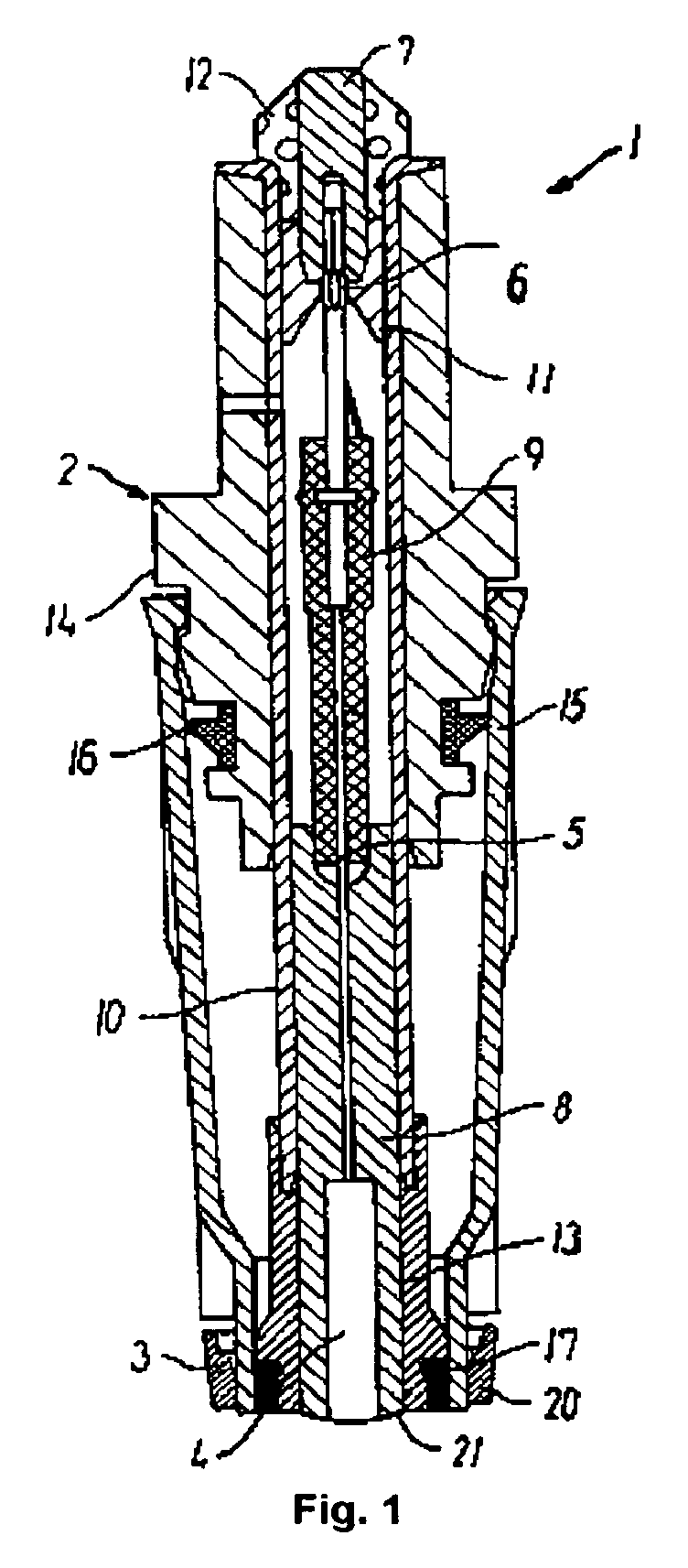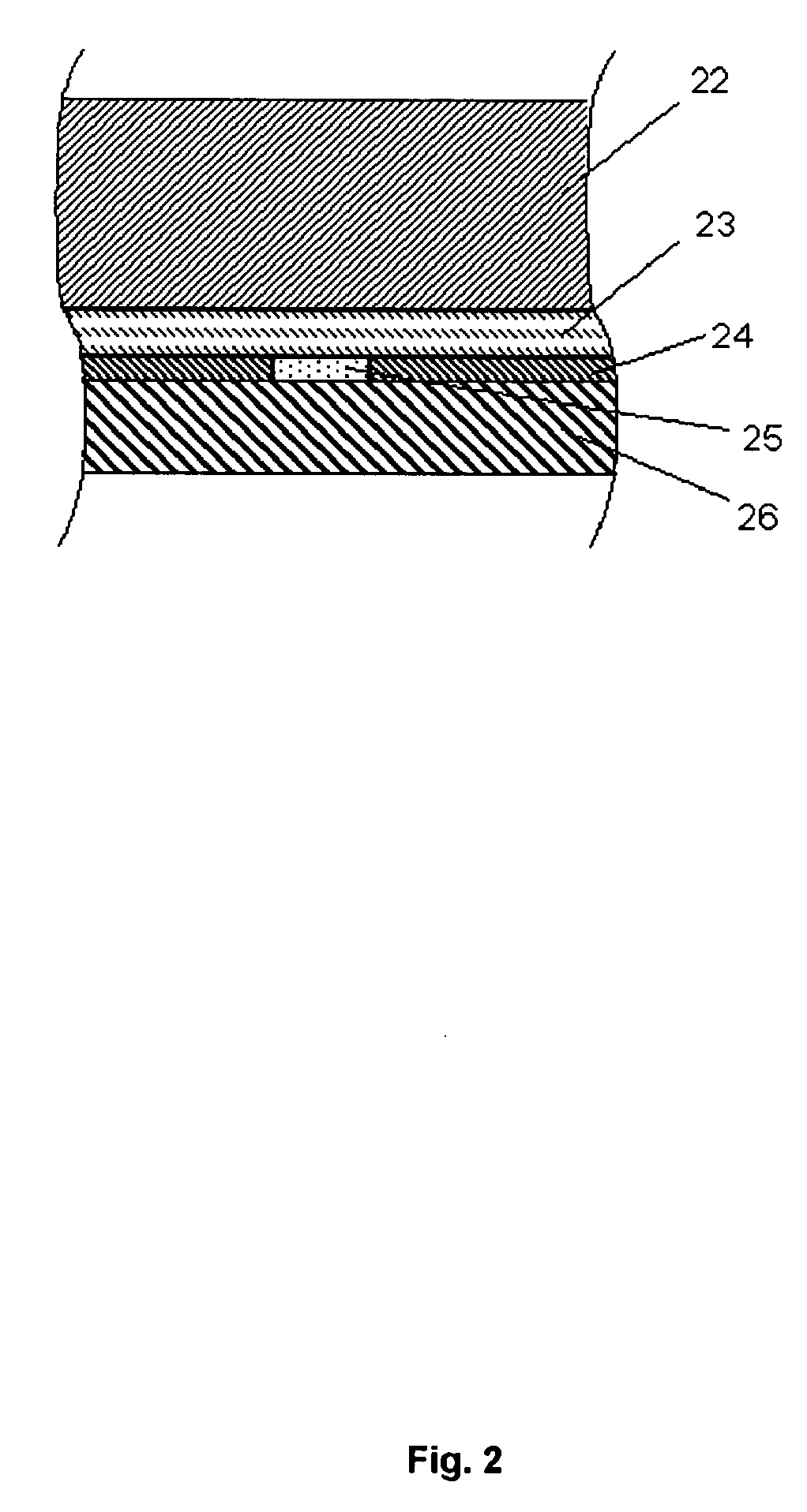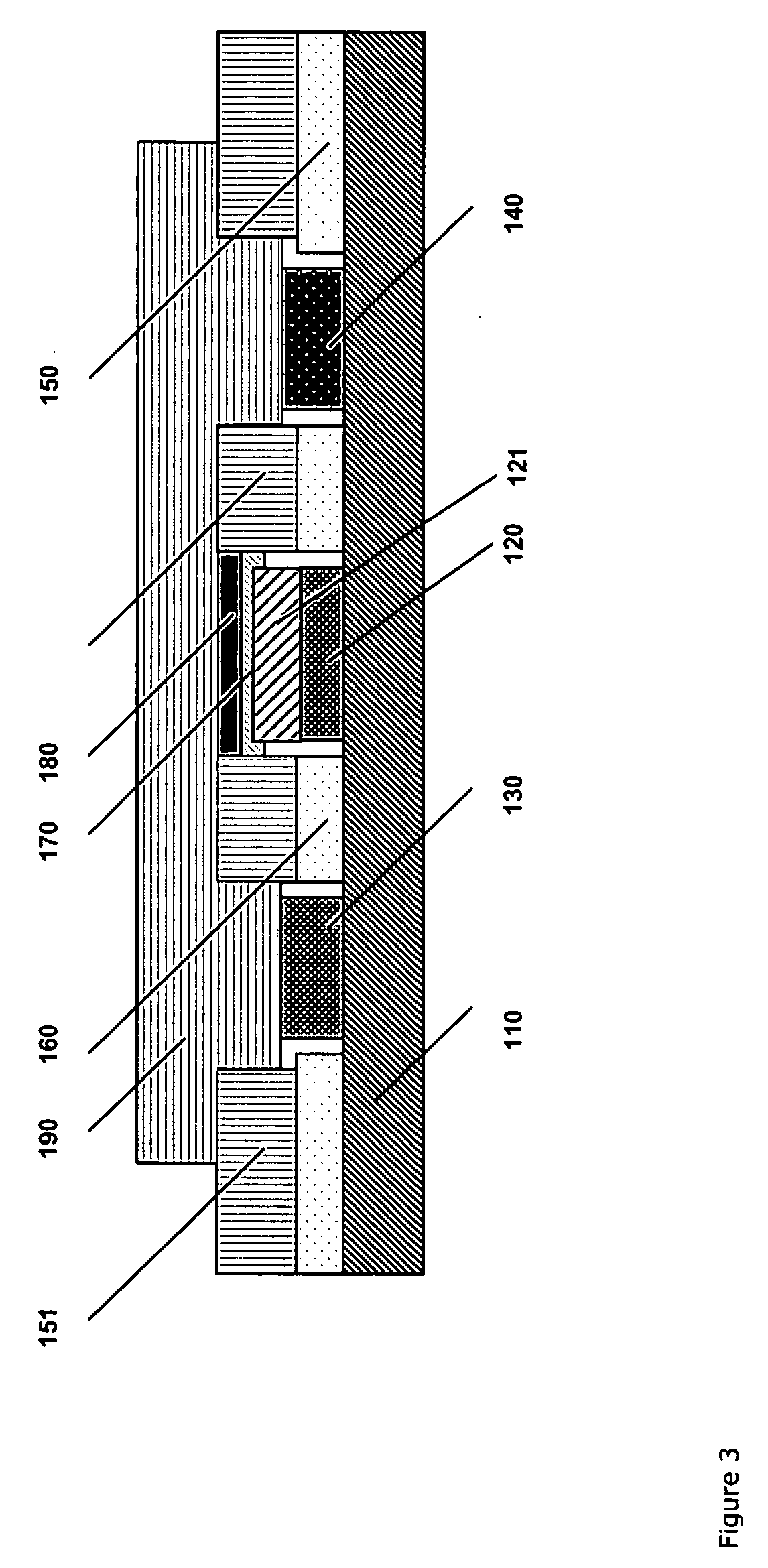Enzyme sensor with a cover membrane layer covered by a hydrophilic polymer
a technology of hydrophilic polymer and enzyme sensor, which is applied in the direction of liquid/fluent solid measurement, biochemistry apparatus and processes, biochemistry apparatus, etc., can solve the problems of blood bias, decrease of analyte diffusion coefficient, and decrease of sensor sensitivity when measuring blood samples
- Summary
- Abstract
- Description
- Claims
- Application Information
AI Technical Summary
Benefits of technology
Problems solved by technology
Method used
Image
Examples
example 1
Preparation of Cover Membrane For Conventional Glucose Sensor
[0202] A diffusion limiting porous membrane of an approximately 12 μm layer of polyethylene-therephthalate (PETP) (pore diameter approximately 0.1 μm; pore density: 1.6. 106 pores / cm2) was impregnated with a hydrophilic polyurethane (Hydromed D4) by fully immersing sheets of a size of 150*200 mm in a 1% solution of PUR in 96% EtOH. After 5 seconds, the membrane was removed from the solution at a constant speed of around 50 mm / s. Afterwards, the membrane was allowed to dry until the ethanol had evaporated (less than 30 minutes). The sheets were subsequently cut into suitable pieces, where necessary.
example 2
Exemplary Creatine and Creatinine Sensor Constructions
[0203] Each of the creatine and the creatinine sensor are built up as known amperometric sensors. FIG. 1 shows such a sensor 1 (described above) which is suited for mounting in an apparatus for measuring the concentration of analytes in a biological sample, e.g., an ABL™ 735 Blood Gas Analyzer (Radiometer Medical ApS, Copenhagen, Denmark).
[0204]FIG. 2 shows details of the membrane 21 comprising four layers: water-containing porous spacer layer 22 facing the platinum anode 4 of the electrode 2, an interference limiting membrane layer 23, a gasket 24 encircling an enzyme layer 25, and a diffusion limiting porous polymeric material 26 which has been impregnated with a hydrophilic polyurethane having a water content of around 80%. The coated membrane layer 26 faces the sample to be analysed.
[0205] The spacer layer 22 may be a 21 ±2 μm track-edged membrane of polyethylene terephthalate (PETP) (pore diameter approximately 1.3-1.5 μm...
example 3
Exemplary Lactate Sensor Construction
[0212] Enzyme catalysed reaction between lactate and oxygen yields hydrogen peroxide (H2O2) and pyruvate. Hydrogen peroxide is then detected by an amperometric electrode. The sensor 1 (FIG. 1) is suited for mounting in an apparatus for measuring the concentration of analytes in a biological sample, e.g., an ABL™ 735 Blood Gas System (Radiometer Medical A / S, Copenhagen, Denmark).
[0213] With reference to FIG. 2 where layer 22 is omitted, the membrane 21 of the lactate sensor comprises three layers: an interference limiting membrane layer 23 facing the platinum anode 4 of the electrode 2, an enzyme layer 25, and a diffusion limiting porous membrane layer 26 facing the fluid sample. The interference limiting membrane layer 23 may be a 6±2 μm porous membrane of cellulose acetate (CA). The enzyme layer is typically an approximately 1-2 μm layer of cross-linked lactate oxidase (7 units / membrane). The diffusion limiting porous membrane layer 26 may be ...
PUM
| Property | Measurement | Unit |
|---|---|---|
| porosity | aaaaa | aaaaa |
| pore size | aaaaa | aaaaa |
| thickness | aaaaa | aaaaa |
Abstract
Description
Claims
Application Information
 Login to View More
Login to View More - R&D
- Intellectual Property
- Life Sciences
- Materials
- Tech Scout
- Unparalleled Data Quality
- Higher Quality Content
- 60% Fewer Hallucinations
Browse by: Latest US Patents, China's latest patents, Technical Efficacy Thesaurus, Application Domain, Technology Topic, Popular Technical Reports.
© 2025 PatSnap. All rights reserved.Legal|Privacy policy|Modern Slavery Act Transparency Statement|Sitemap|About US| Contact US: help@patsnap.com



